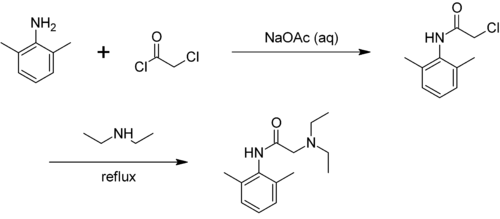 | |
 | |
| Names | |
|---|---|
| Preferred IUPAC name Chloroacetyl chloride | |
| Other names 2-Chloroacetyl chloride Chloroacetic acid chloride Chloroacetic chloride Monochloroacetyl chloride | |
| Identifiers | |
3D model (JSmol) | |
| ChEBI | |
| ChEMBL | |
| ChemSpider | |
| ECHA InfoCard | 100.001.065 |
| EC Number |
|
| KEGG | |
PubChem CID | |
| RTECS number |
|
| UNII | |
| UN number | 1752 |
CompTox Dashboard (EPA) | |
| |
| |
| Properties | |
| C2H2Cl2O | |
| Molar mass | 112.94 g·mol−1 |
| Appearance | Colorless to yellow liquid |
| Density | 1.42 g/mL |
| Melting point | −22 °C (−8 °F; 251 K) |
| Boiling point | 106 °C (223 °F; 379 K) |
| Reacts | |
| Vapor pressure | 19 mmHg (20°C) [1] |
| Hazards | |
| GHS labelling: | |
    | |
| Danger | |
| H301, H311, H314, H331, H372, H400 | |
| P260, P261, P264, P270, P271, P273, P280, P301+P310, P301+P330+P331, P302+P352, P303+P361+P353, P304+P340, P305+P351+P338, P310, P311, P312, P314, P321, P322, P330, P361, P363, P391, P403+P233, P405, P501 | |
| NFPA 704 (fire diamond) | |
| Flash point | noncombustible [1] |
| NIOSH (US health exposure limits): | |
PEL (Permissible) | none [1] |
REL (Recommended) | TWA 0.05 ppm (0.2 mg/m3) [1] |
IDLH (Immediate danger) | N.D. [1] |
| Safety data sheet (SDS) | Oxford MSDS |
Except where otherwise noted, data are given for materials in their standard state (at 25 °C [77 °F], 100 kPa). | |
Chloroacetyl chloride is a chlorinated acyl chloride. It is a bifunctional compound, making it a useful building block chemical.


